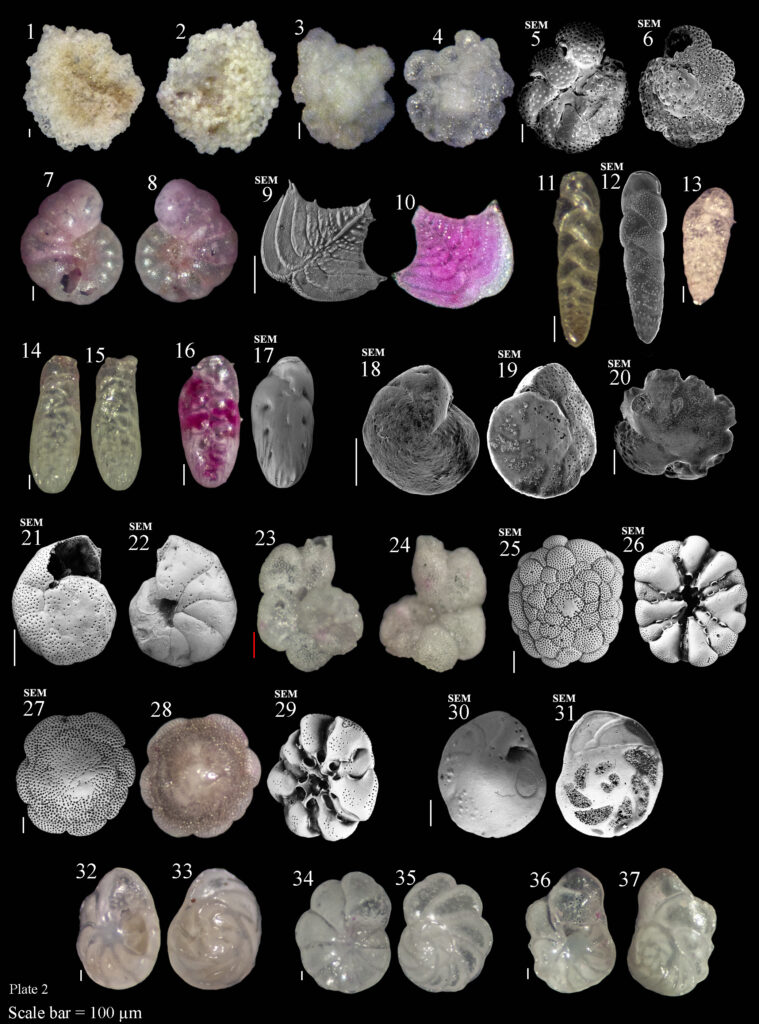From the Ocean Depths to the Shore: New Research Uncovers the Link Between Foraminifera and South Pacific Reef Ecology
The MGM Laboratory team has published a new article in the journal Royal Society Open Science. This work, completed as part of the National Geographic Pristine Seas Project, highlights foraminifera from reefs in the South Pacific and their connection to local ecology and ecosystems.
This is the first survey documenting the species richness of foraminifera communities in Niue and nearby Beveridge Reef, and it explores their significance for ecosystem integrity. The article is co-authored by Shai Oron and Beverly Goodman-Tchernov alongside Pristine Seas senior marine researcher Alan Friedlander and Pristine Seas founder Enric Sala.


Representative foraminifera discovered in this study. Foraminifera are tiny single-celled marine organisms that are ideal for environmental monitoring as they are plentiful, highly sensitive to environmental changes, and have a long history of scientific record.
Representative images of a pocket beach in Niue. Top: View of Tamakautoga Beach. Bottom: Alan Friedlander presenting a handful of beach sediment derived from reef biota. Foraminifera are an extremely important component of beach development in Niue, where essential ecological-sedimentary linkages exist. Analysis of the foraminiferal assemblages in Niue indicates a close relationship between source and depositional zones. This highlights the importance of habitat conservation and protection of natural current regimes as beaches are highly vulnerable to changes in either energy conditions or ecological disturbance affecting sediment supply. Photos by Marino Evans-Vakatini.



